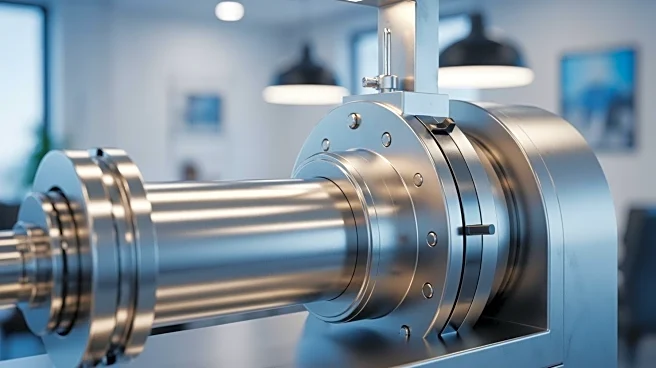What's Happening?
U.S. companies increased their borrowing for equipment investments by 8.6% in September compared to the previous year, according to the Equipment Leasing and Finance Association (ELFA). The total new loans,
leases, and lines of credit signed by companies reached $10.5 billion on a seasonally adjusted basis, marking a 4% increase from the previous month. This represents the largest single-month increase in new business volumes in nine months. ELFA President and CEO Leigh Lytle noted that with the Federal Reserve resuming its easing cycle, demand is expected to remain strong, and financial conditions are likely to improve further. The ELFA CapEx Finance Index, which measures leasing and finance activity, is based on a survey of 25 members, including major companies like Bank of America and Caterpillar.
Why It's Important?
The increase in business borrowing for equipment indicates a positive outlook for the U.S. equipment finance sector, which is valued at $1.3 trillion. This growth suggests that companies are investing in capital assets despite ongoing political and economic uncertainties. The rise in borrowing could lead to increased production capacity and efficiency, potentially boosting economic growth. Financial services companies and manufacturers stand to benefit from this trend, as it may lead to higher demand for their products and services. Additionally, the relatively stable confidence index from the Equipment Leasing & Finance Foundation suggests that businesses are optimistic about future economic conditions.
What's Next?
As the Federal Reserve continues its easing cycle, financial conditions are expected to improve, potentially leading to sustained demand for equipment financing. Companies may continue to invest in equipment to enhance productivity and competitiveness. Stakeholders, including financial institutions and manufacturers, will likely monitor these trends closely to adjust their strategies accordingly. The ongoing political and economic uncertainties could still pose challenges, but the current borrowing trends suggest resilience in the equipment finance sector.
Beyond the Headlines
The increase in equipment borrowing may have broader implications for the U.S. economy, including potential impacts on employment and technological advancement. As companies invest in new equipment, they may require skilled labor to operate and maintain these assets, potentially leading to job creation. Additionally, investments in advanced equipment could drive innovation and technological progress, contributing to long-term economic growth.














